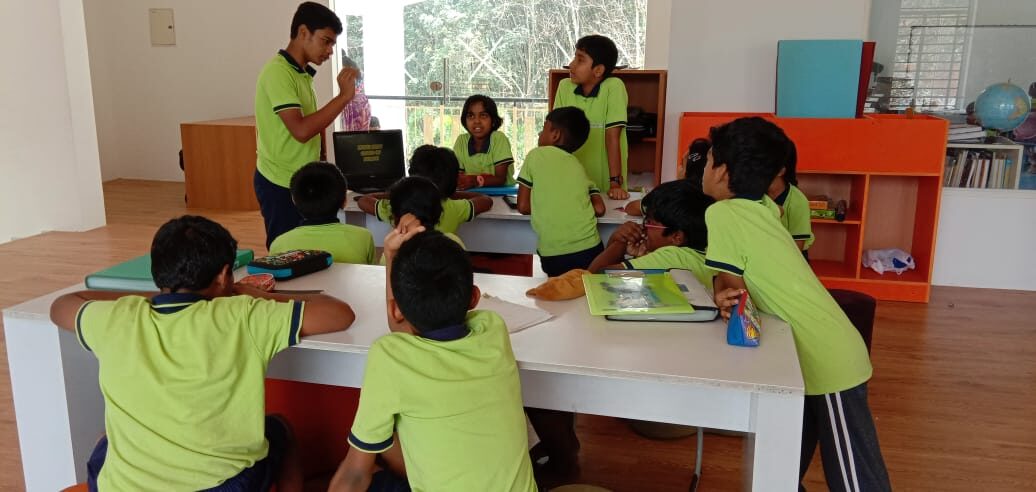Why Do Children Need To Learn Multiple Languages In Kindergarten?
Human language is not biologically inherited but learned and vital to brain development. Longitudinal studies by Harvard University confirm that learning additional languages increases critical thinking skills, creativity and flexibility of the mind in young children. Studies show that language is cognitive and not just linguistic. Neuroscience links language learning to comprehension skills. Learning a language involves memorizing rules and vocabulary, which helps strengthen the brain which, like any muscle in the body, gets better with exercise.
So, When is the right time to start learning a second language or third or fourth language?
Children’s overall development starts from the moment they are born. Their brain development is at its peak in the initial years. An adult communicates with a newborn or a toddler spontaneously in a language whose vocabulary is rich, and style is colloquial. Even though this makes no sense to the baby, it begins to get early lessons in language. In trying to imitate the adult, it makes mistakes in grammar and pronunciation and gets corrected along the way. Before long it becomes a master at spoken language.
There is an inherent flaw in the traditional school education where the child is taught writing, reading, speaking and listening in that order. A child picks up his mother tongue through speaking. This pickup should be leveraged for all languages. And the best age to do so is as early as 3 years. The reason is that children of that age are mostly engaged in play. The play is the best way to learn. The number of mistakes you make dwindles with age. When a child learns multiple languages at early years, its brain learns how to learn new language as a skill. This helps in their later academics and careers.
All subjects of study are forms of language in a way. Physics has its own language as does Economics or Mathematics. Children who learn multiple languages are found to do better at verbal and mathematical ability tests than those who do not. Clearly the way to teach language is to start with listening and speaking and proceed to reading followed by writing.
At GreenValley International School, we expose our children to four languages in preschool. We do it through fun-filled rhymes and stories. Rhymes have a way of impressing upon the minds of young and old. At the age of five and six, GreenValley children engage in game-like activities and within a short time become familiar with the language that an adult finds difficult to learn or speak. Using the mediums of music and drama, the children can be heard singing along to German songs. Expose them to many spoken English words before they start writing in it. It is the same with all languages. More importantly, they learn these languages without consciously knowing that they are learning new languages.


